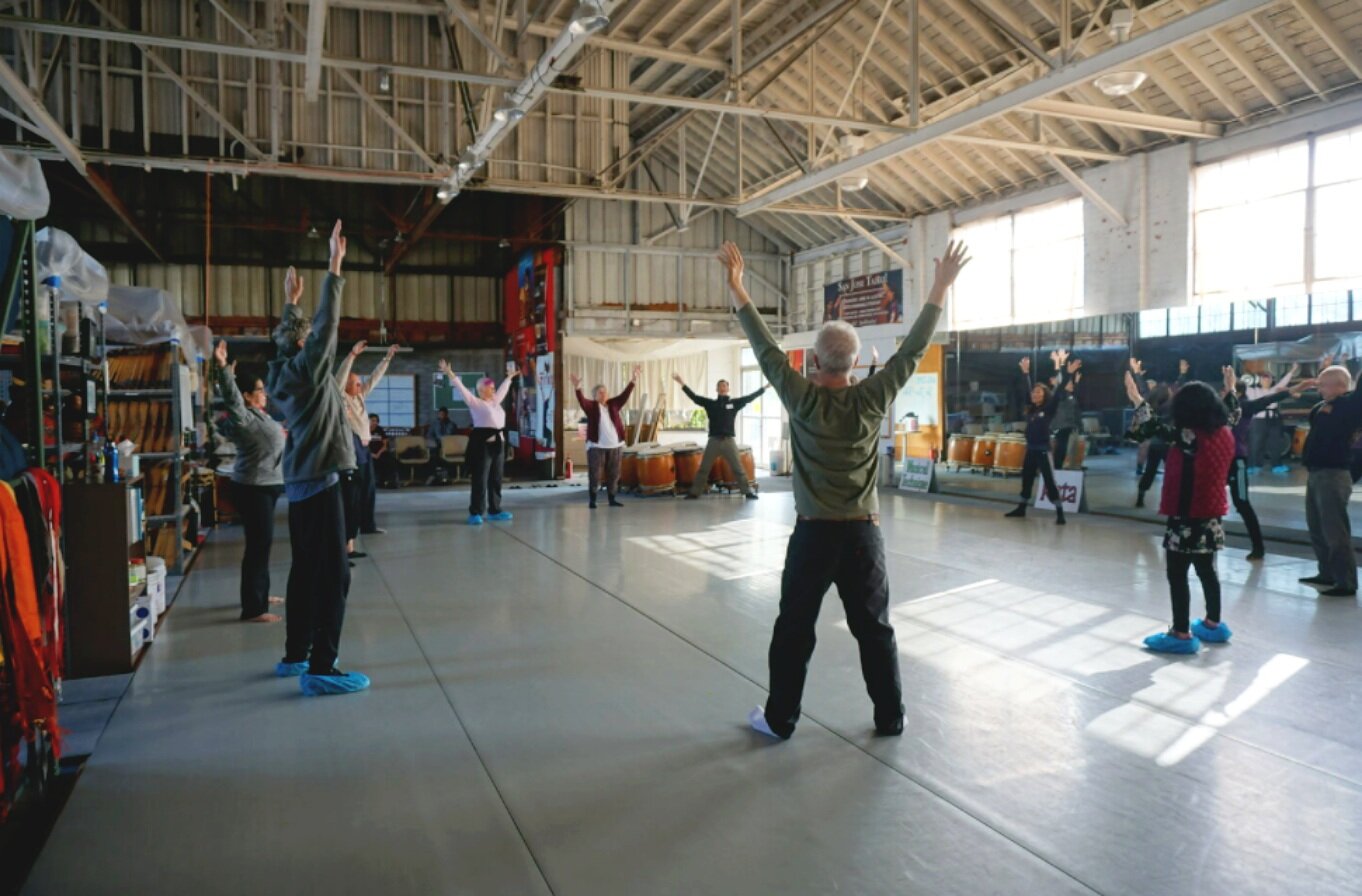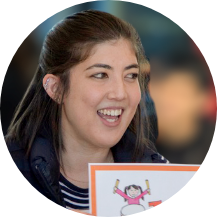Flow vs. Freeze: The Healing Power of Taiko
By Sydney Shiroyama and Barbara Rice
I was first introduced to taiko drumming as a child and I knew it was unique.
I apprehensively approached the large leather drum head with thick drumsticks and I got an instant feeling of empowerment as I produced a large booming noise with one strike.
My friends and I practiced taiko every week for our community performance. Our large body motions and synchronized vocal chants during the performance were choreographed to match the powerful presence of the taiko drums. As a timid child, every time I played in unison in the other performers, I gained confidence.
As an Occupational Therapist, I see the tremendous therapeutic potential of this unique and meaningful activity.
By practicing taiko, participants engage in large amplitude movements, full extensions, trunk rotation, variation of volume and tempo, and forceful vocalizations.
Through learning about managing symptoms of Parkinson’s Disease (PD), I grew convinced that the practice of taiko could have therapeutic benefits for the PD community.
I designed a recreation class for individuals with PD and their care partners with performing members of San Jose Taiko, a professional performing company and one of the first taiko groups in North America.
As pilot classes turned to 8-week sessions, we found that taiko drumming is indeed an attractive recreational option for individuals with PD who are looking for ways to:
Be active
Manage their symptoms
Build personal connections with a safe and supportive community
At the 5th World Parkinson’s Congress in Kyoto, Japan, I presented a poster, “Taiko drumming for individuals with Parkinson’s disease: Performing artists partner with OT to promote community wellness”.
Being surrounded by thousands of delegates from around the world inspired me to learn about various therapeutic techniques.
Sydney at the 2019 World Parkinson’s Congress in Kyoto, Japan presenting the poster, Taiko Drumming for Individuals with Parkinson’s Disease: Performing artists partner with OT to promote community wellness.
Excited to continue developing the taiko program in San Jose, they shifted our approach to integrate mind-body practices and completed two successful 8-week sessions. The classes are currently online due to the global pandemic, but they look forward to the day when they can safely gather at the taiko studio again.
During these classes, I see there is something special that fosters empowerment, connectedness to others, and self-efficacy.
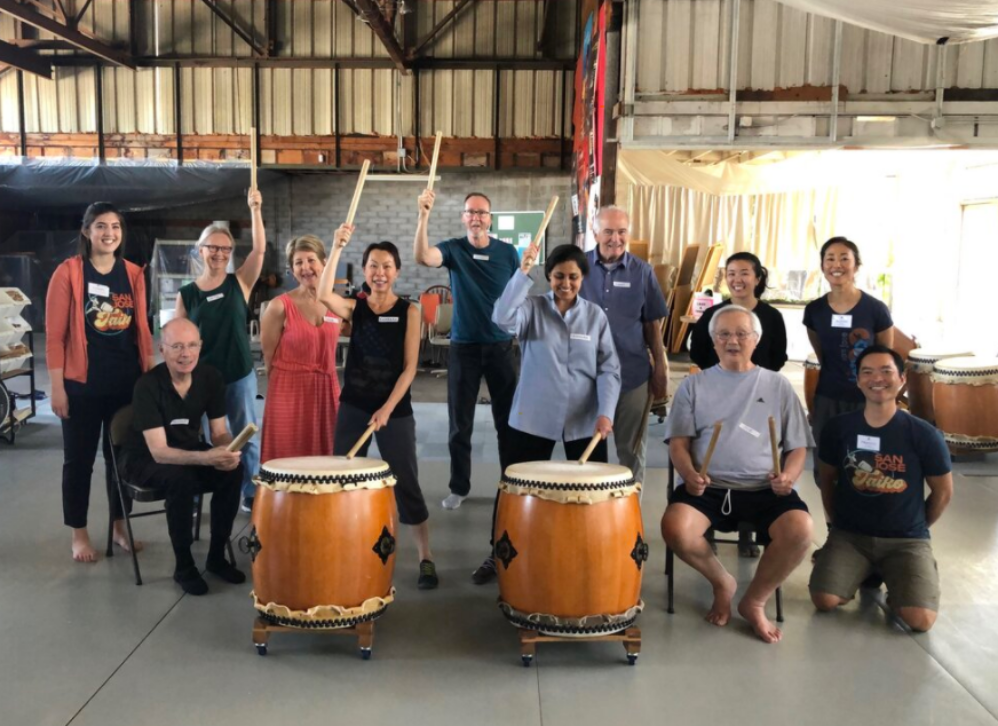
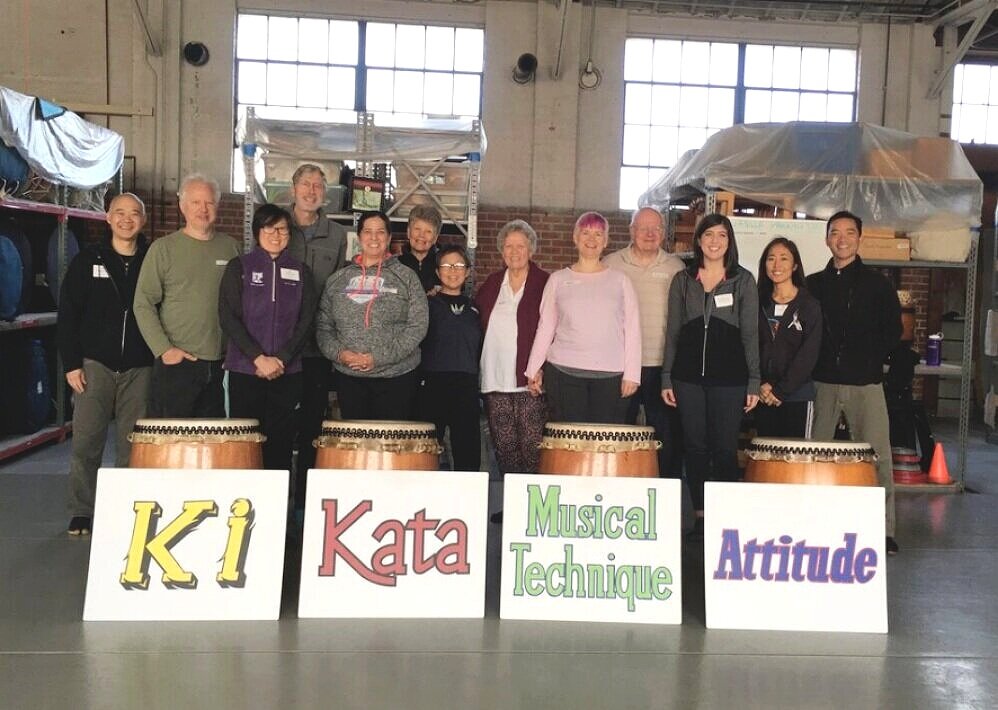
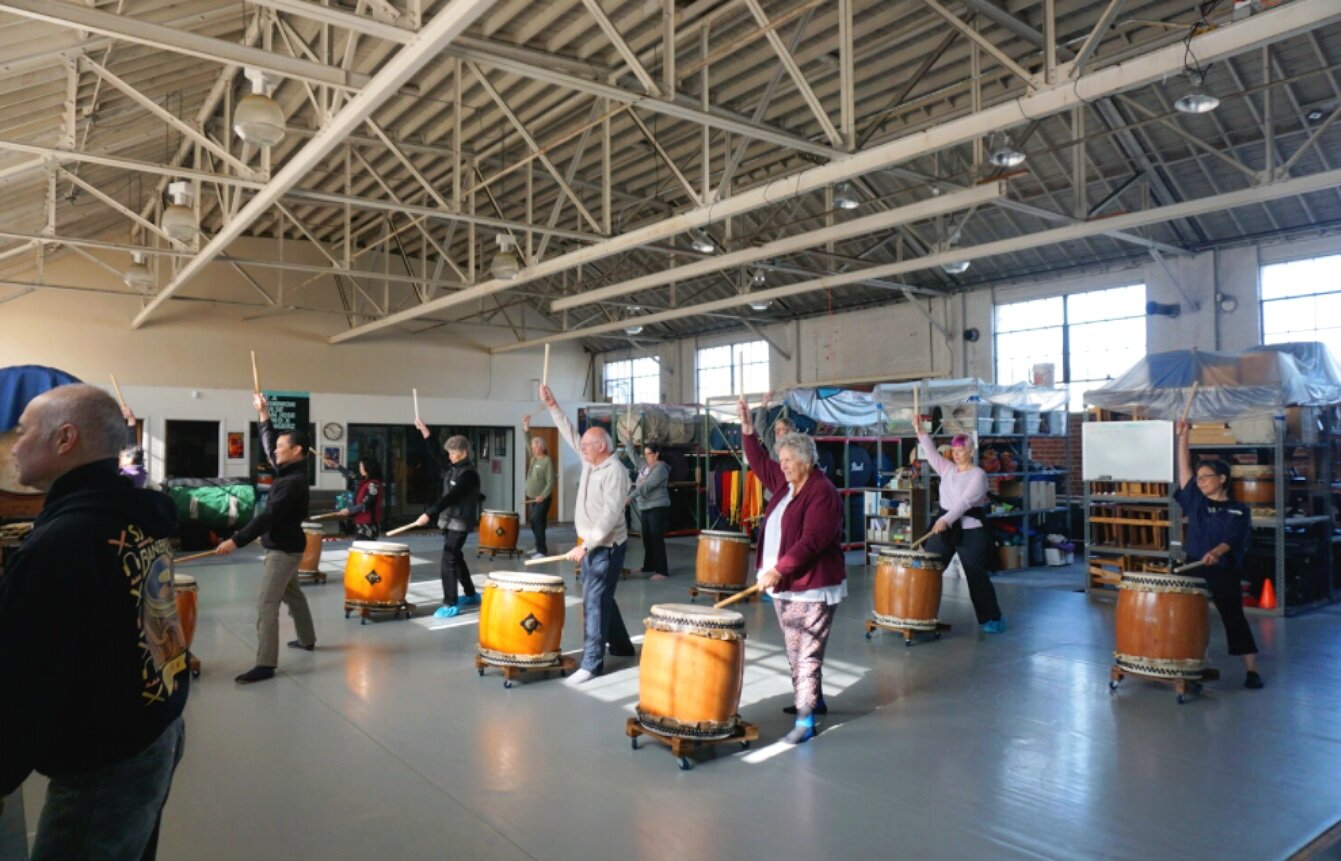
San Jose Taiko's Parkinson's Recreational Class. Photos courtesy of San Jose Taiko.
Barbara Rice Experiencing Flow
I am excited to share insights from participants to find out what draws them to taiko and what impact it has on them as an individual with PD. The following highlights Barbara’s experience as a participant of San Jose Taiko’s Parkinson’s Recreation Class.
“Like everyone with Parkinson’s, I am constantly refining and working on a regimen for managing my condition.
I was inspired early on by The Brain’s Way of Healing (Dr. Norman Doidge), which opened my eyes to the possibility of neuroplasticity, and more recently by the website outthinkingparkinsons.com. The latter explores things like understanding the role of the central nervous system, the cranial nerves, the stress-disease connection, etc., all from a holistic perspective that I’ve directly experienced in my own journey.
After some research and a bunch of trial and error, my current self-prescribed program includes a combination of meditation, craniosacral therapy, and a thoughtful mix of exercises designed to promote neuroregeneration and keep me strong. This includes things like biking (per my neurologist’s suggestion), conscious walking (see Norman Doidge’s book), tai chi (for balance and immune system), and as of last year, Taiko Drumming.
After my first Taiko class last year I actually cried. I wasn’t sure exactly why, but it was as if the energy that was frozen inside for a long time was finally released.
Certainly, Taiko shares many benefits with other forms of exercise, e.g. big movements, cross body, vocalization, and community… but I found there was something different about Taiko.
First - it was fun! I can’t honestly say that about many forms of exercise, some of which require a lot of mental and physical WORK.
When I get into the rhythm of Taiko, it’s like my body is working without feeling like it’s work. Joy is a critical component of PD therapy!
That’s when Sydney and I started talking about the neuroscience of Flow.
Flow, as defined by psychologist Mihaly Csikszentmihalyi, is the state of concentration or complete absorption with the activity at hand. It’s like being “in the zone”, where nothing else matters and you forget your worries, forget your body, and even forget time. For me, this is what happens with Taiko.
The sound of the Taiko drum is like a call to be present, the rhythm carries me,
and I am totally in the moment.
I can almost feel neuroregeneration occur, but in a relatively effortless and relaxed manner.
Could it be that Taiko - through Flow - actually helps the central nervous system relax enough so the body and brain start working together?
That’s what we’re beginning to explore. In any case it seems that Flow, when at work, is the opposite of freeze. And that promotes healing.”
Watch for more testimonials from our workshops.
For more information and classes:
ABOUT THE AUTHORSSydney Shiroyama, OTR/L
An Occupational Therapist in the San Francisco Bay Area. She is exploring the therapeutic benefits of taiko drumming and consults with local and international taiko groups. Email sydney@taiko-in.com
Barbara Rice
A marketing consultant in San Jose, California, with practical experience with Parkinson’s. She is focused on exploring methods to promote neuroregeneration and overall healing and is a participant and advocate for San Jose Taiko’s Parkinson’s Recreation class.


